Vitra Design Museum’s ‘Science Fiction Design’ explores furniture’s past, present and future visions
‘Science Fiction Design: From Space Age to Metaverse’ at Vitra Design Museum celebrates the collision between visionary science fiction and futuristic product design
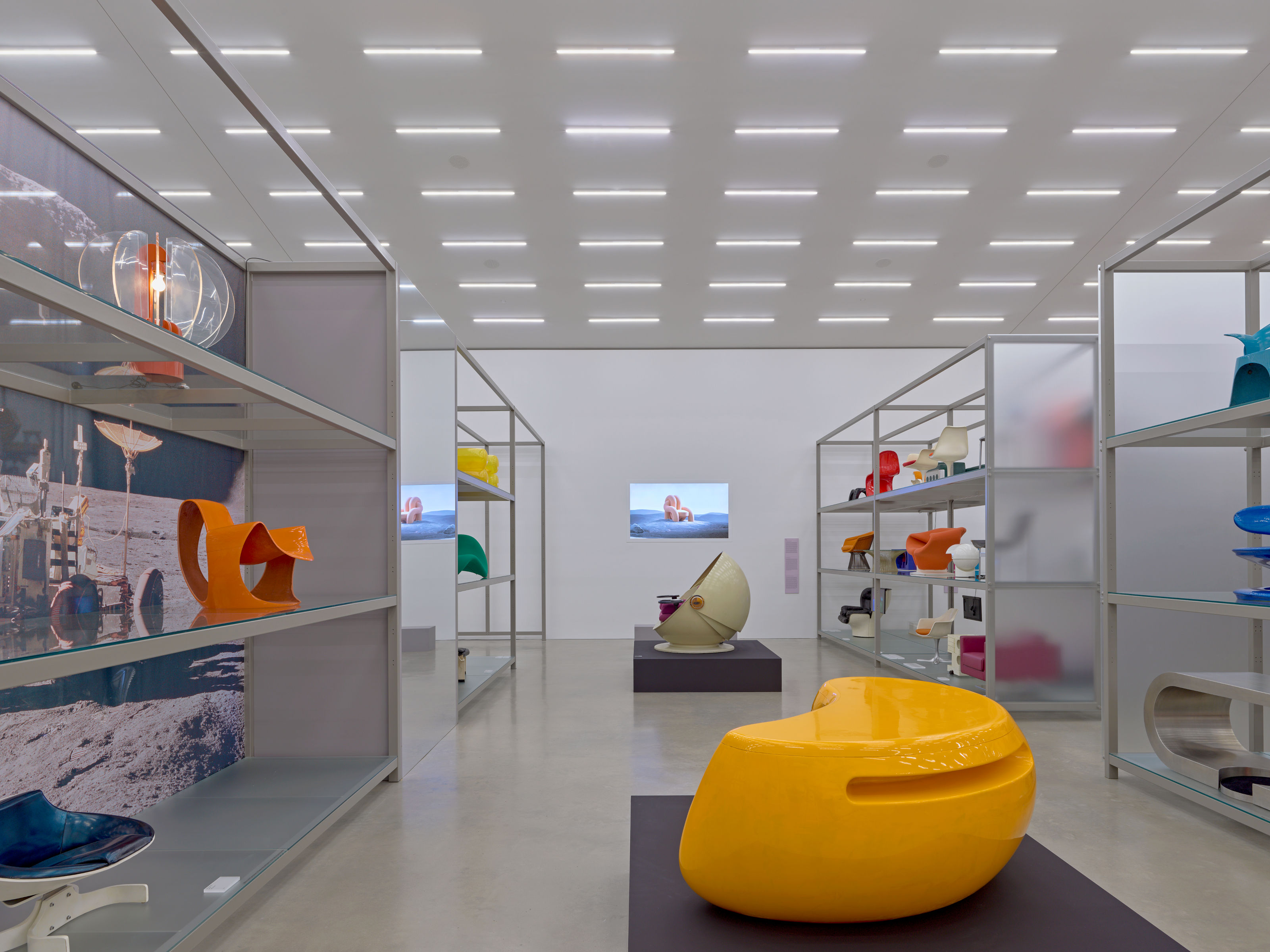
Vitra’s sprawling, architecturally diverse campus in Weil am Rhein, Germany, makes an appropriate setting for this new exhibition, ‘Science Fiction Design: From Space Age to Metaverse’. Tapping into our perennial preoccupation with the shape of the future, ‘Science Fiction Design’ explores the synergy between furniture design and the environments of tomorrow created by artists and production designers.
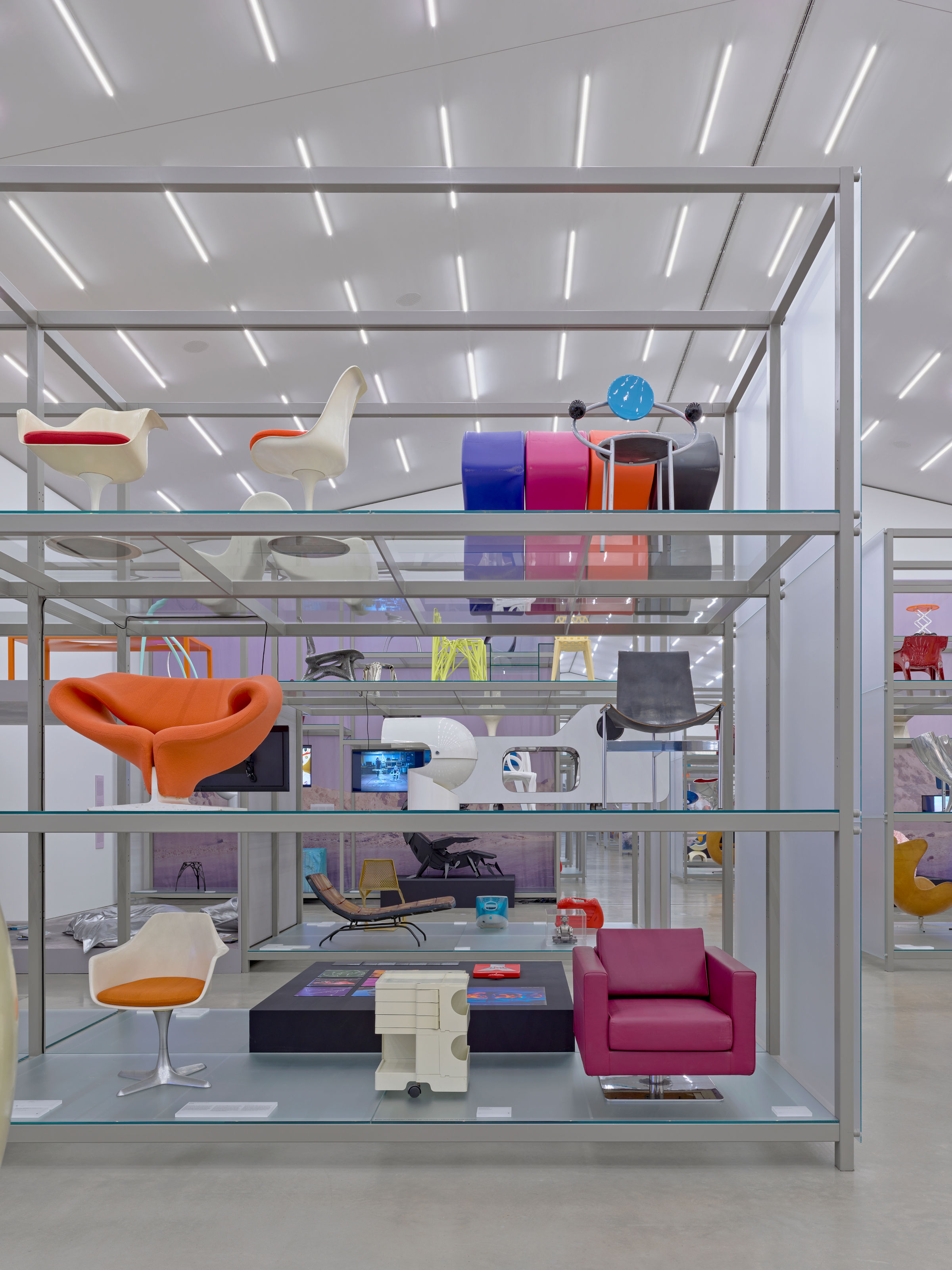
Installation view: Science Fiction Design: From Space Age to Metaverse
Curated by Susanne Graner and Nina Steinmüller, the exhibition features over 100 objects, many of which will be familiar from cameo appearances in everything from Star Trek to 2001: A Space Odyssey to Blade Runner, together with contemporary furniture pieces that are setting the agenda for future visions.
‘Science Fiction Design: From Space Age to Metaverse’ at Vitra Design Museum
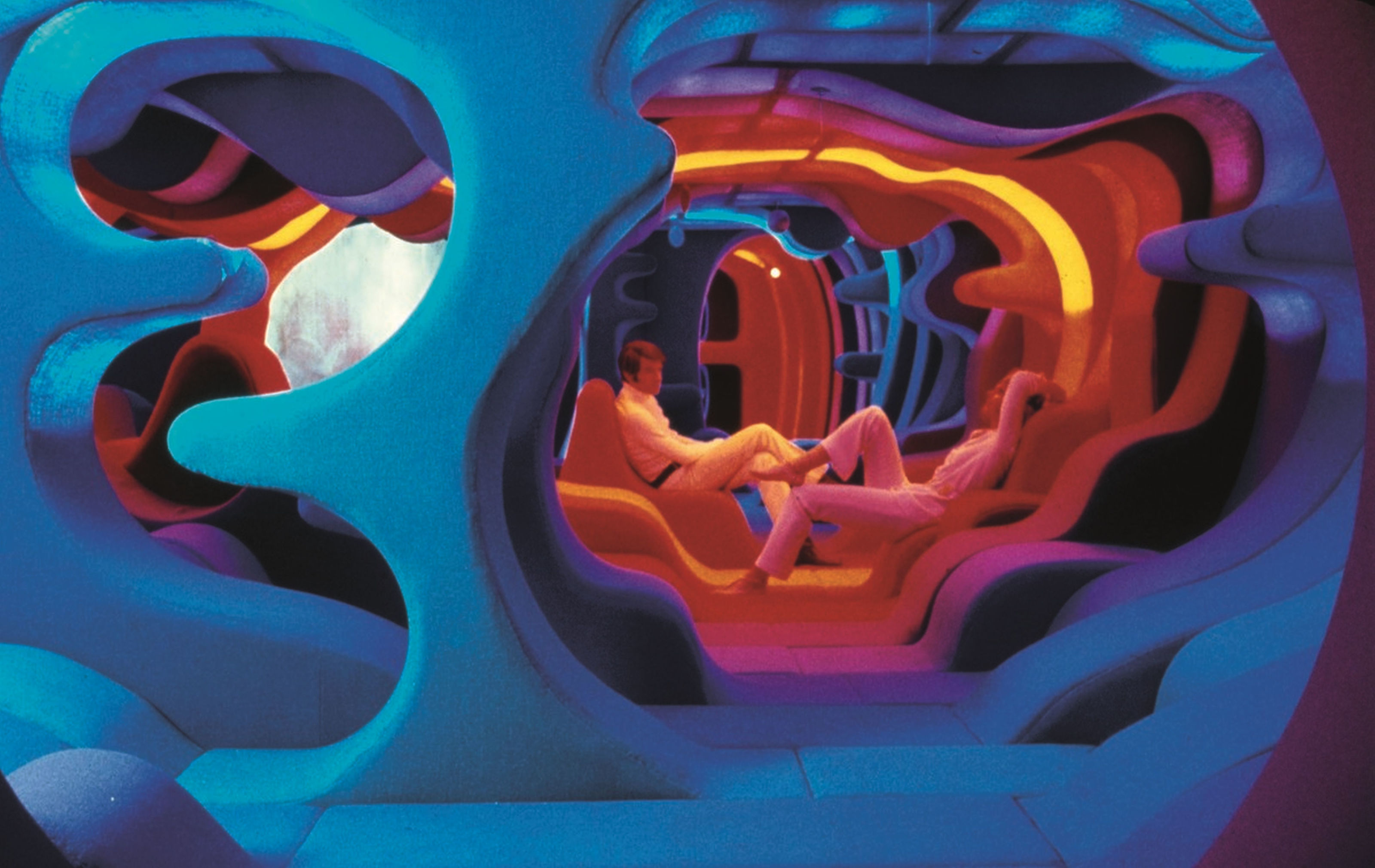
Verner Panton, Fantasy Landscape at the exhibition ‘Visiona 2’, Cologne, Germany, 1970
Argentine visual artist and designer Andrés Reisinger has created the suitably pared-back installation, presenting a host of chairs and other design objects as if they were pieces of high-tech equipment, in a minimal grey framework complete with frosted glass and mirrors that could have come straight from the set of a Kubrick film.
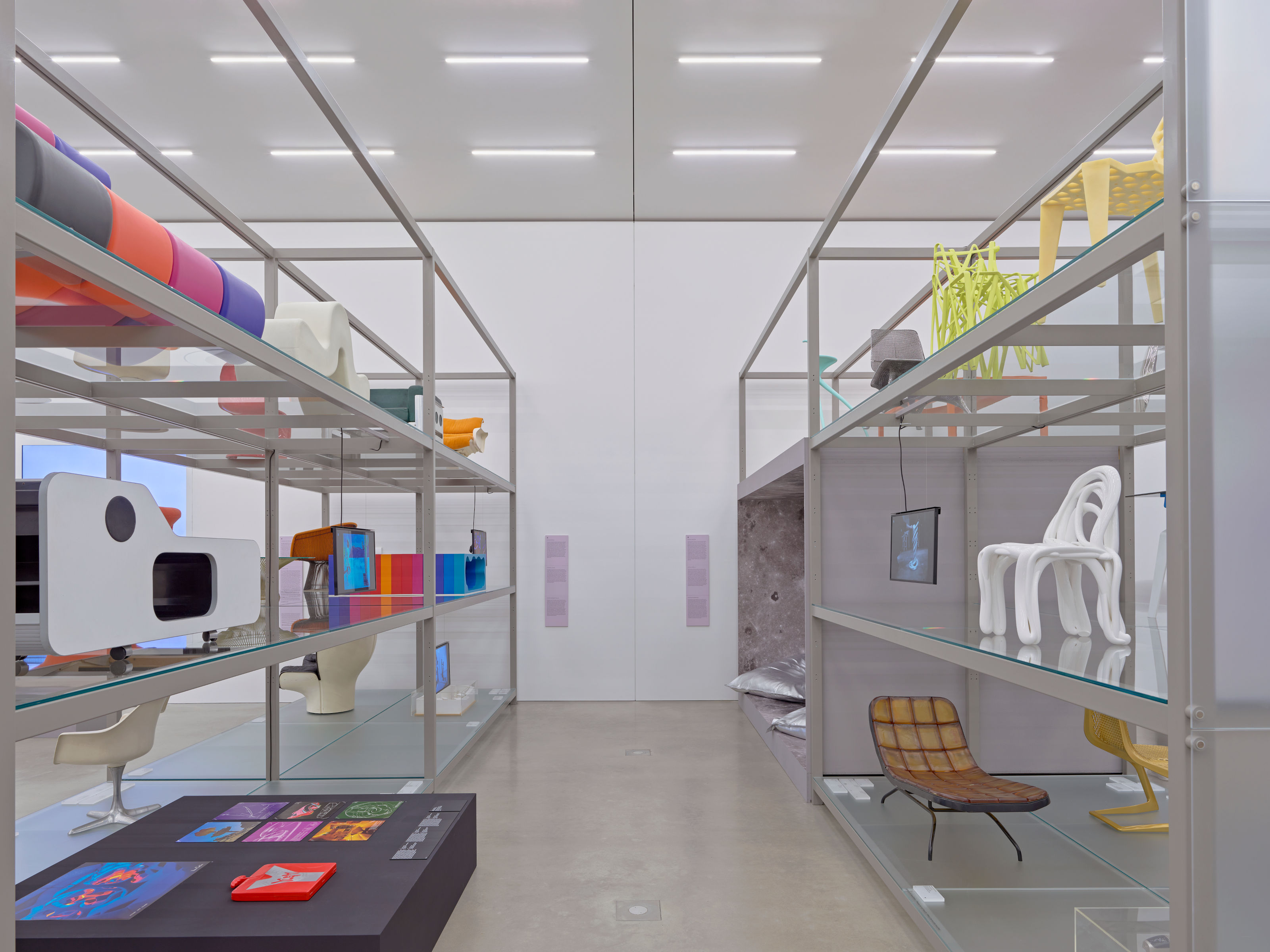
Installation view: ‘Science Fiction Design: From Space Age to Metaverse’
Shown alongside the objects are excerpts from key pieces of science fiction film and literature, placing some of these in context and showing the dialogue and tension between designers creating for the modern age and the set dresser in search of something avant-garde and potentially out of this world.
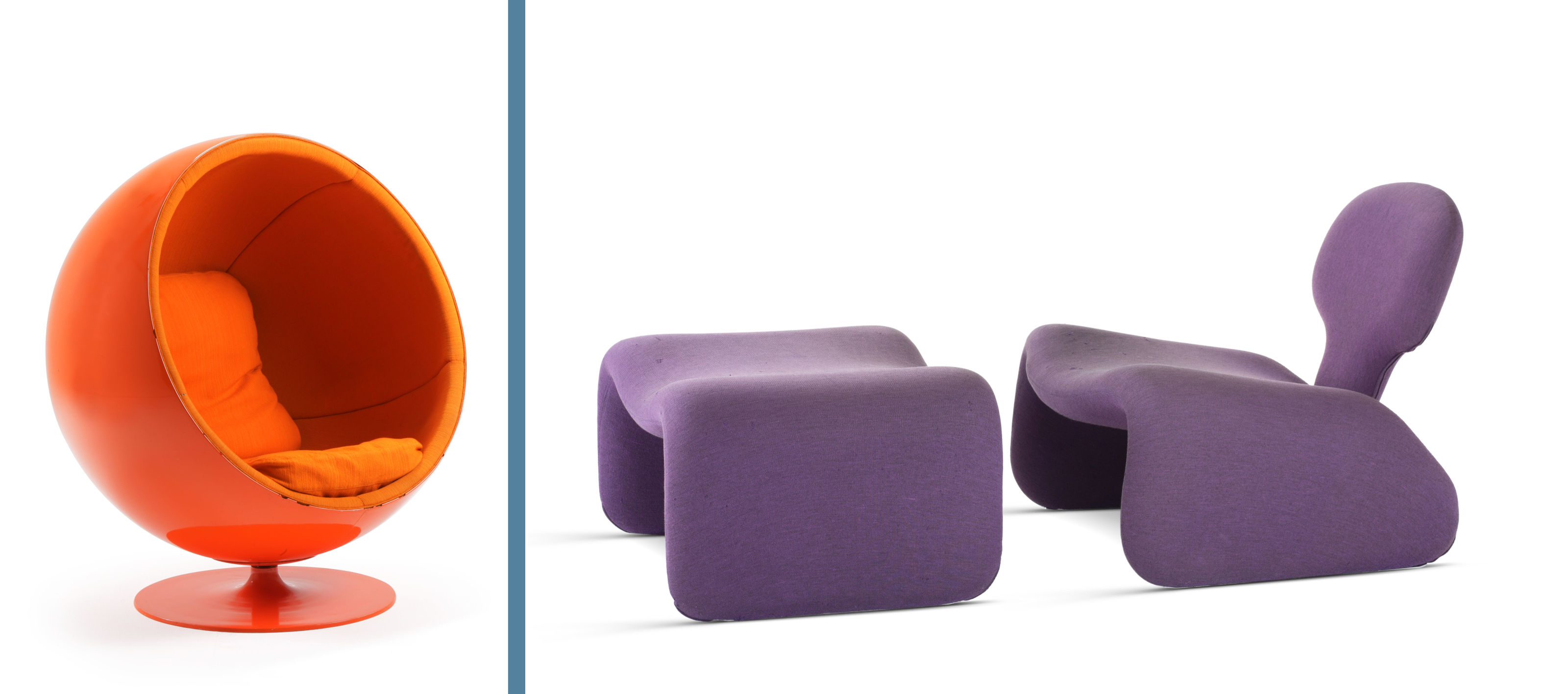
Eero Aarnio, ‘Pallo / Ball Chair’, 1963 (left), Olivier Mourgue, ‘Djinn Lounge Chair,’ 1964/65 (right)
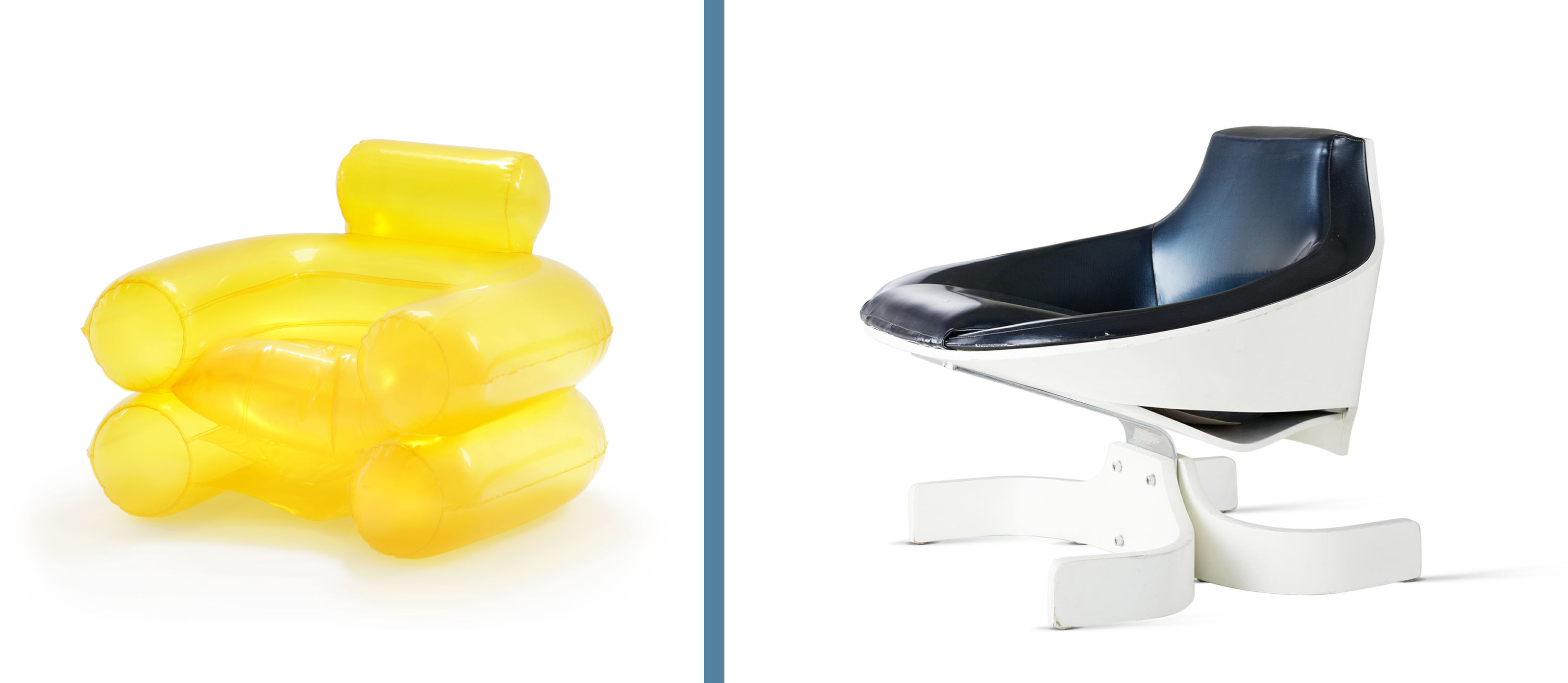
Jonathan De Pas, Paolo Lomazzi, Donato D'Urbino & Carla Scolari, ‘Blow’, 1967 (left), Joe Colombo, ‘Sella’, 1964/65 (right)
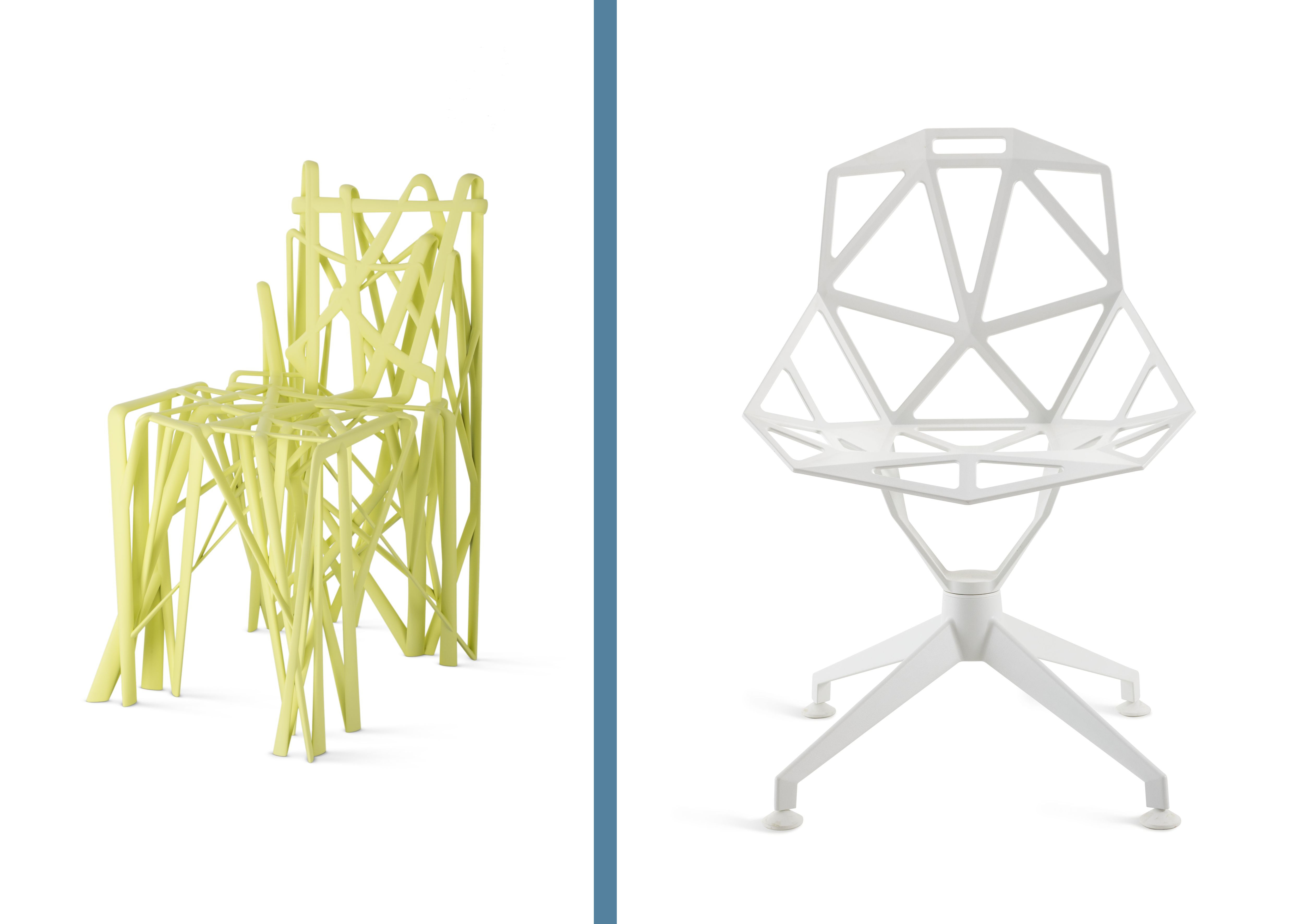
Patrick Jouin, ‘Solid C2’, 2004 (left), Konstantin Grcic, ‘Chair One’, 2008 (right)
In addition to familiar screen icons like Olivier Mourgue’s ‘Djinn’ seating from 2001: A Space Odyssey (1968) and Marc Newson’s ‘Orgone’ chair from Prometheus (2012), there are also explicitly space-age creations from the usual suspects, like Luigi Colani, Joe Colombo and Verner Panton, as well as the occasional leftfield choice (Charles Rennie Mackintosh’s ‘Argyle’ chair (1897) in Blade Runner (1982), for example).
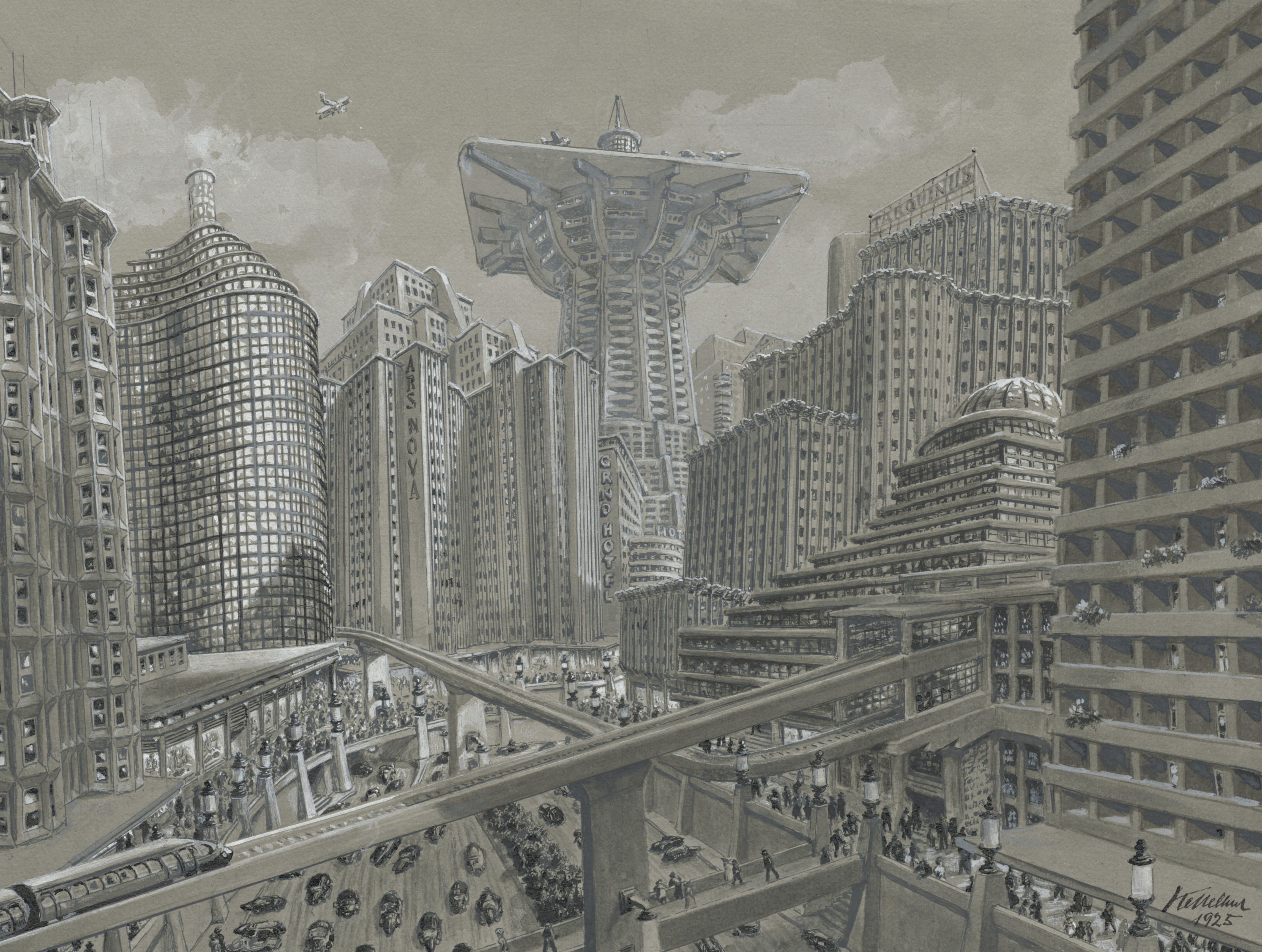
Erich Kettelhut, Drawing for Metropolis, 2nd Edition, 1925
There are also pieces that pioneered new technologies like 3D-printed metal and even the dreaded NFTs, the latter exemplified by Reisinger’s own digital creations, which delve into the uncharted and thus overlooked realm of the Metaverse.
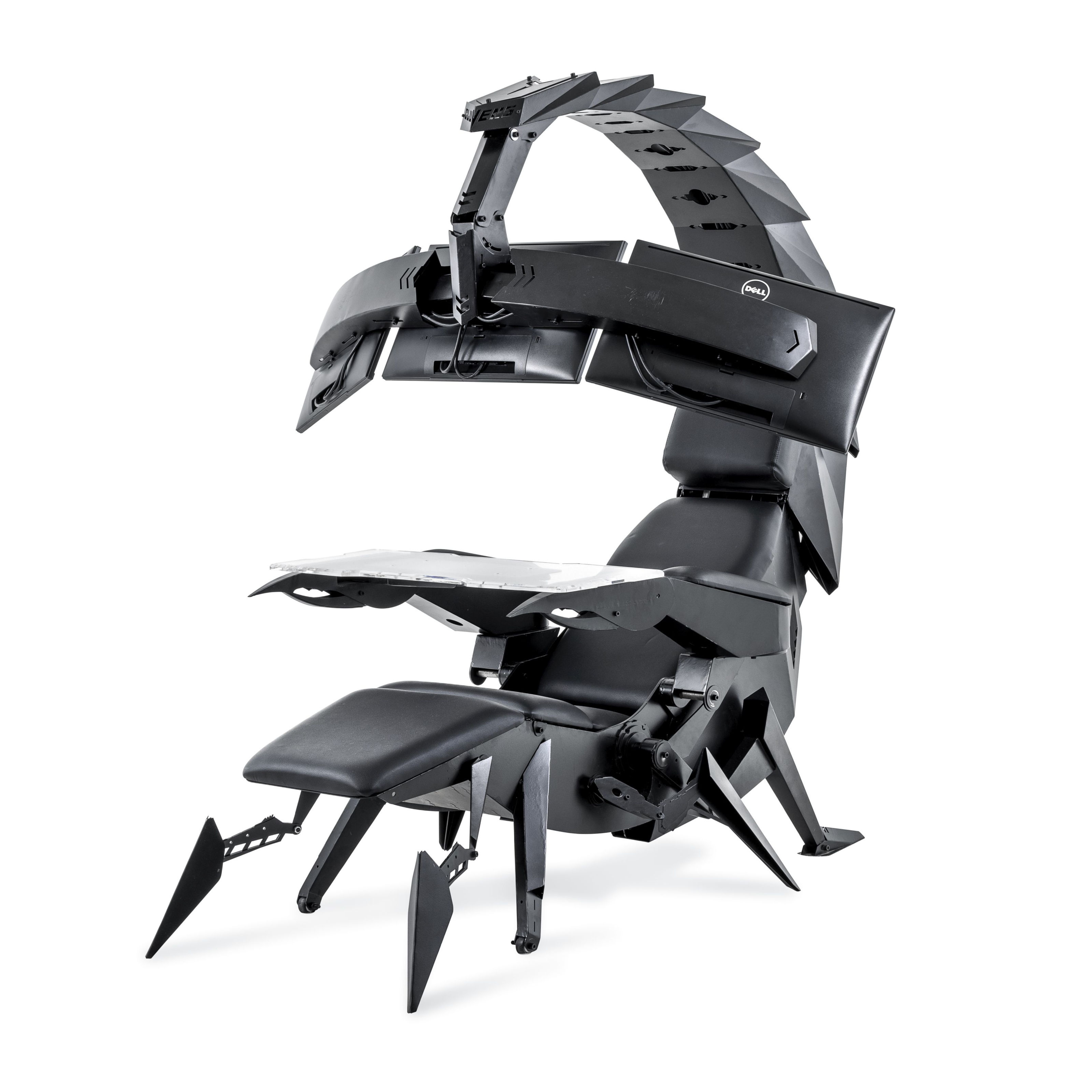
Scorpion Computer Cockpit, 2020
Science fiction was once treated as a temperature check on the technological issues facing society and contemporary culture, filtered through aesthetics and aspirations. The furniture on display at Vitra showcase how this relationship is increasingly two way.
Receive our daily digest of inspiration, escapism and design stories from around the world direct to your inbox.
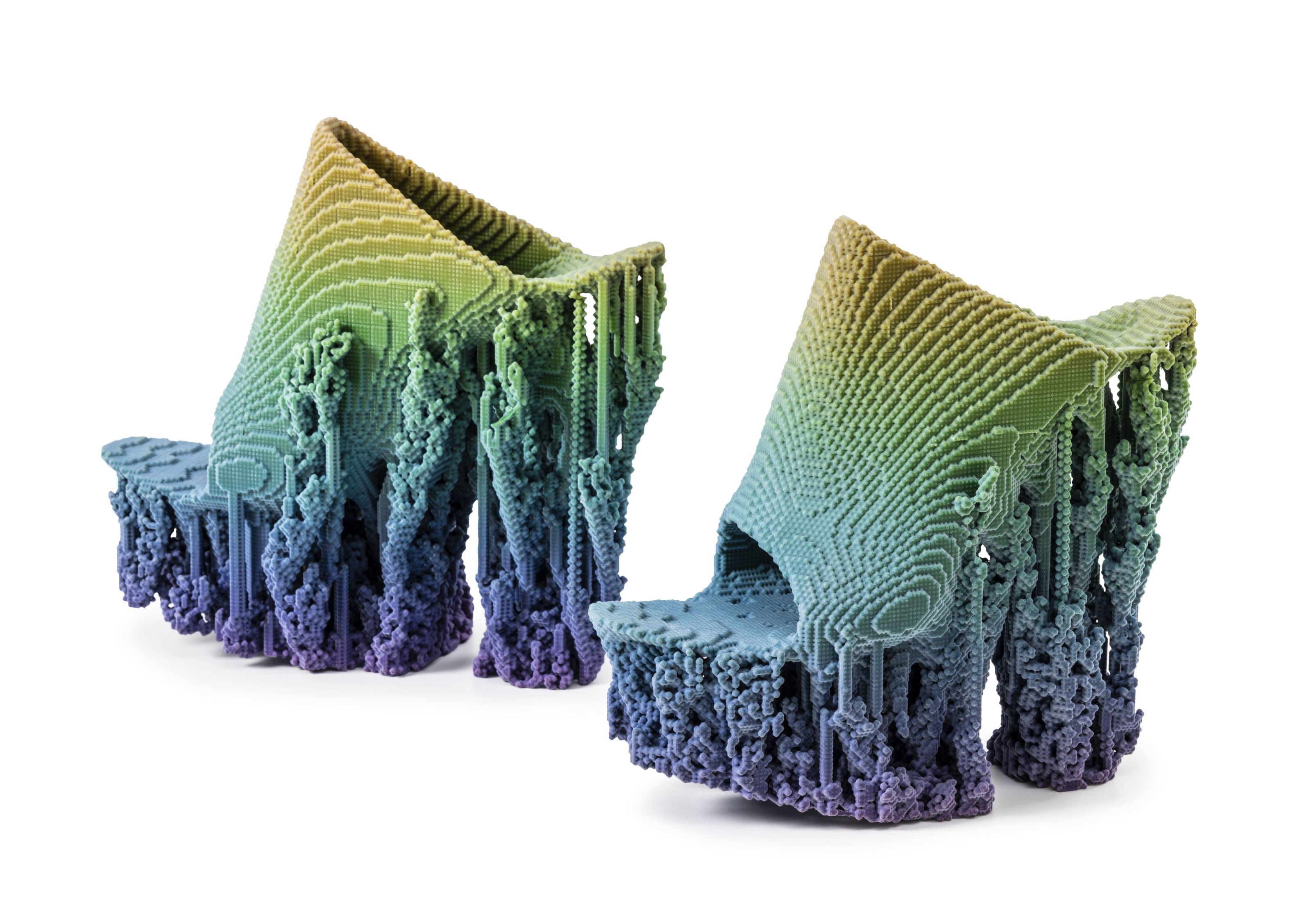
Francis Bitonti, Molecule Shoes, 2015
‘Science Fiction Design: From Space Age to Metaverse’, 18 May 2024 – 11 May 2025, Vitra Schaudepot, Weil am Rhein, Germany, Design-Museum.de
A selection of our favourites pieces from the show

Günter Ferdinand Ris, Herbert Selldorf, ‘Sunball’, 1969-71
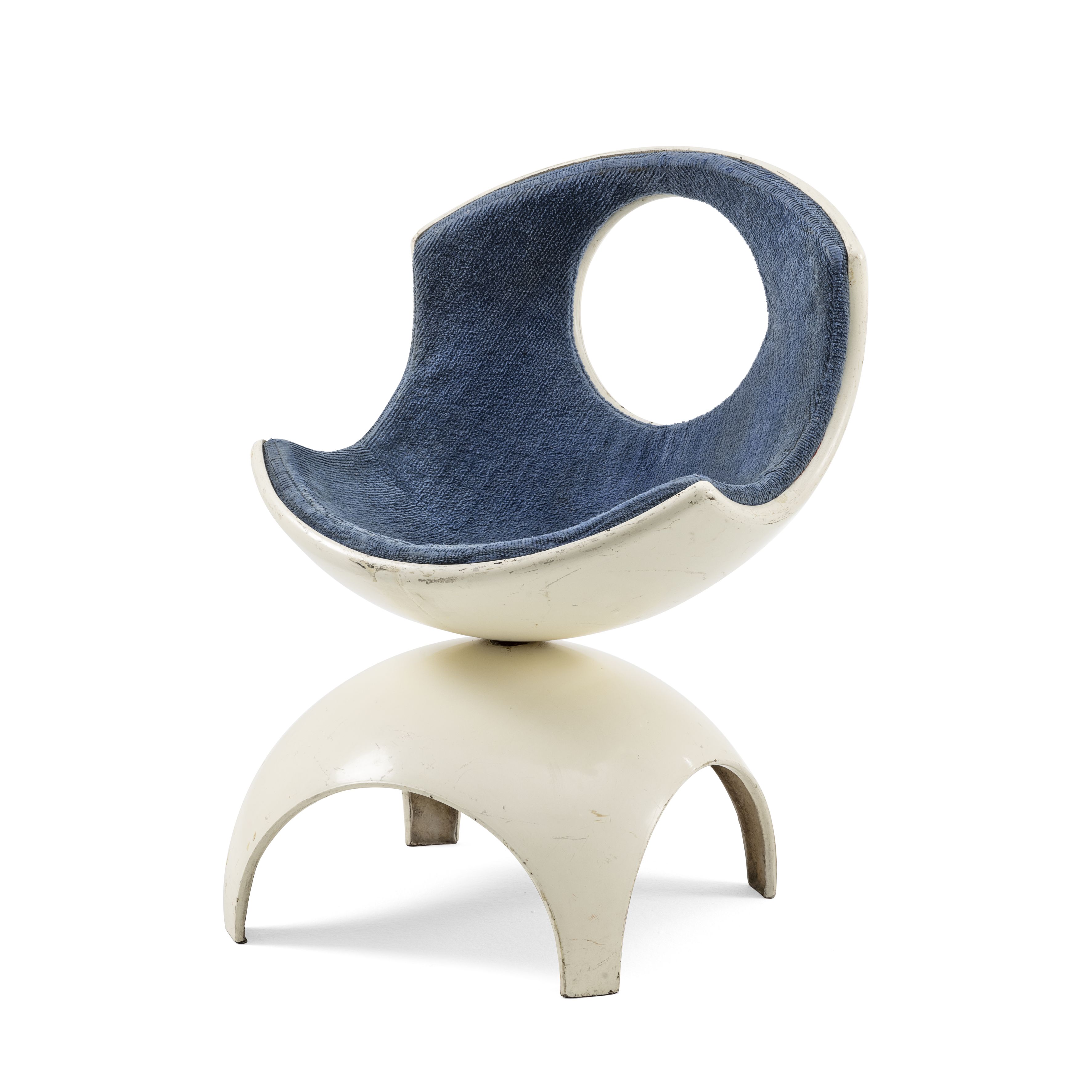
Matti Suuronen, ‘Untitled’, 1969
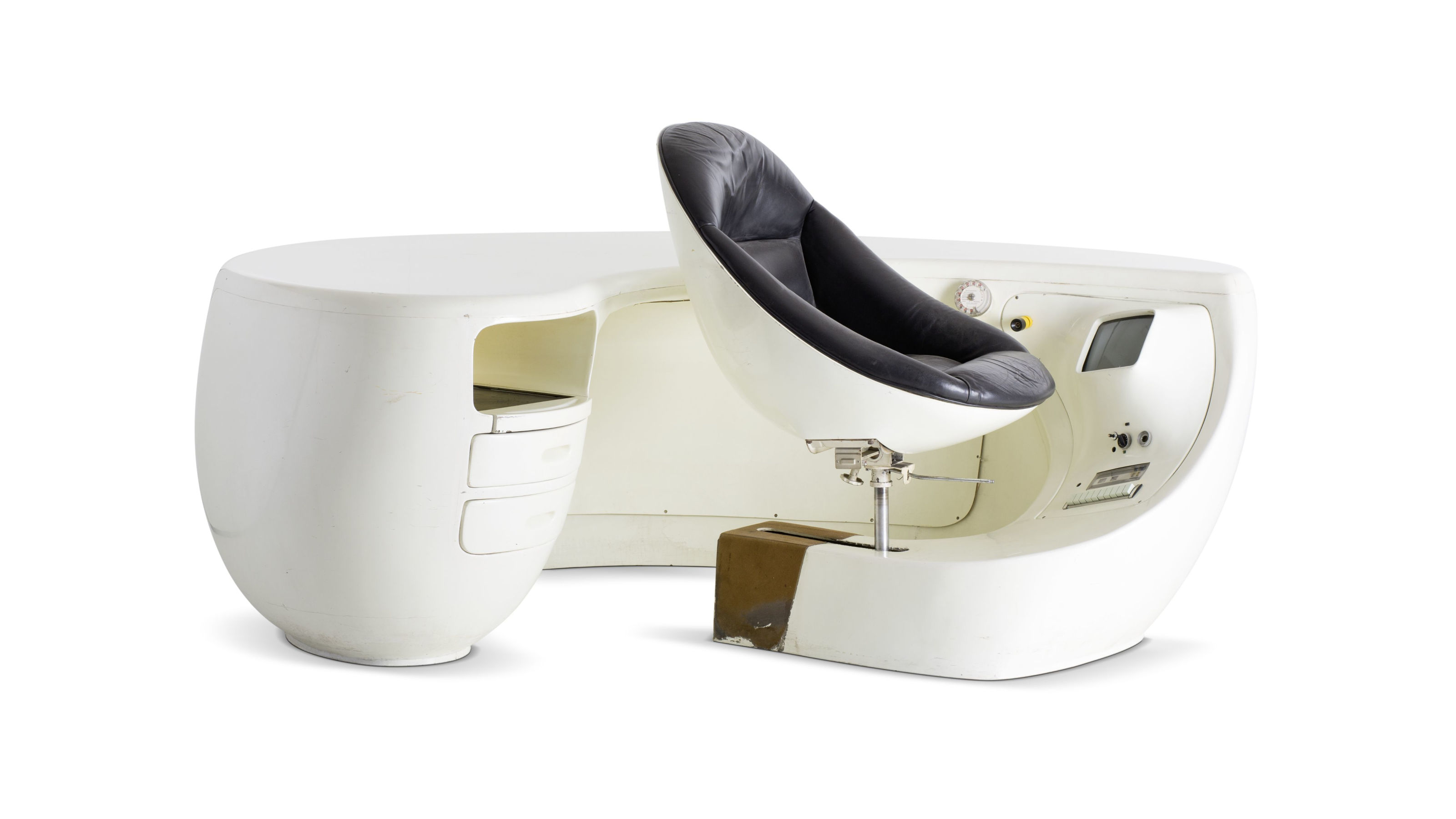
Maurice Calka, ‘P.-D.G. Desk’, 1969
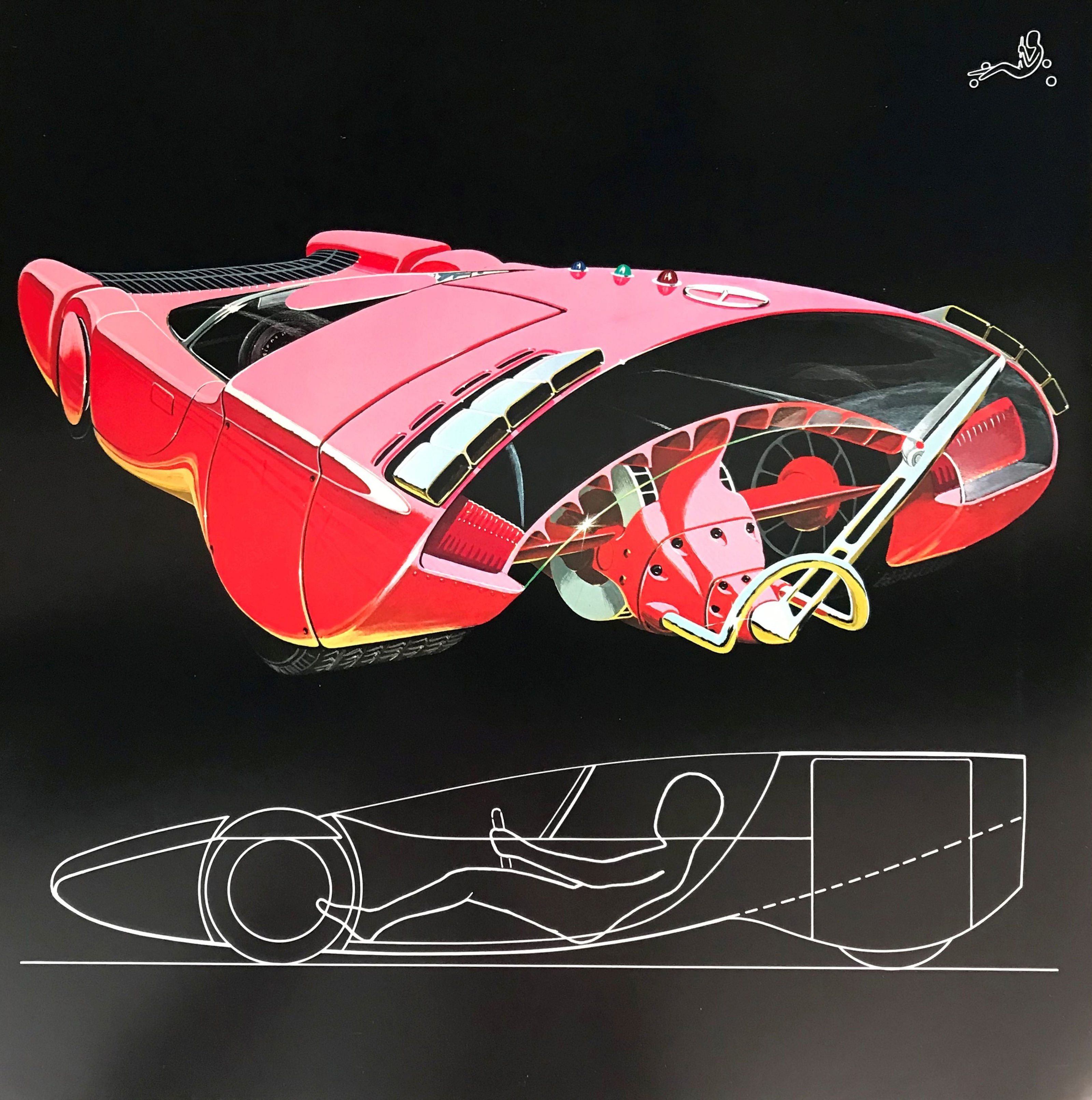
Luigi Colani, Vehicle Study, 1970/71

ZYVA Studio & Charlotte Taylor, Neo-Chemosphere, 2021

AIBO ERS-110, Sony, 1999
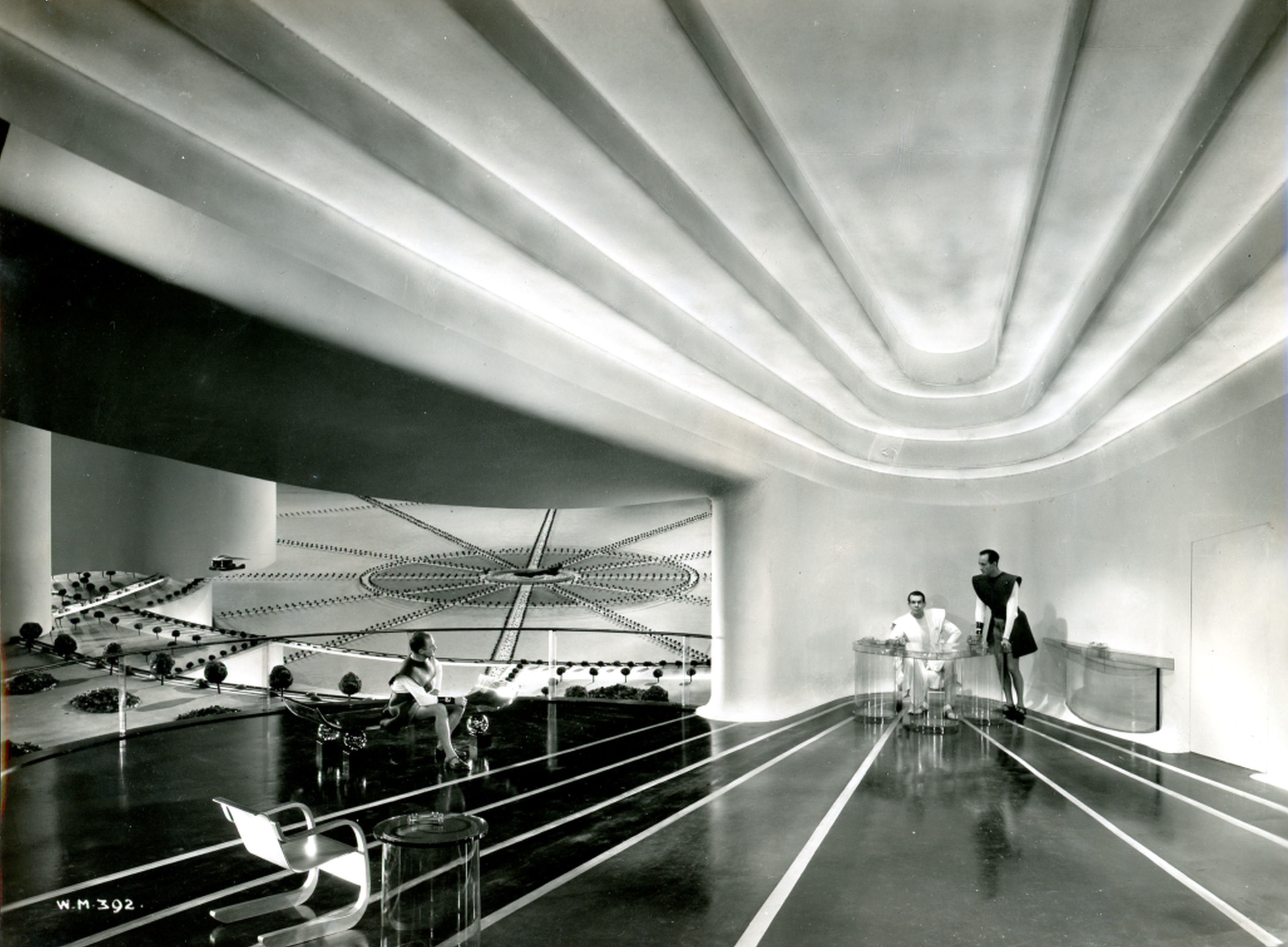
Still image from the film set of Things To Come, 1936
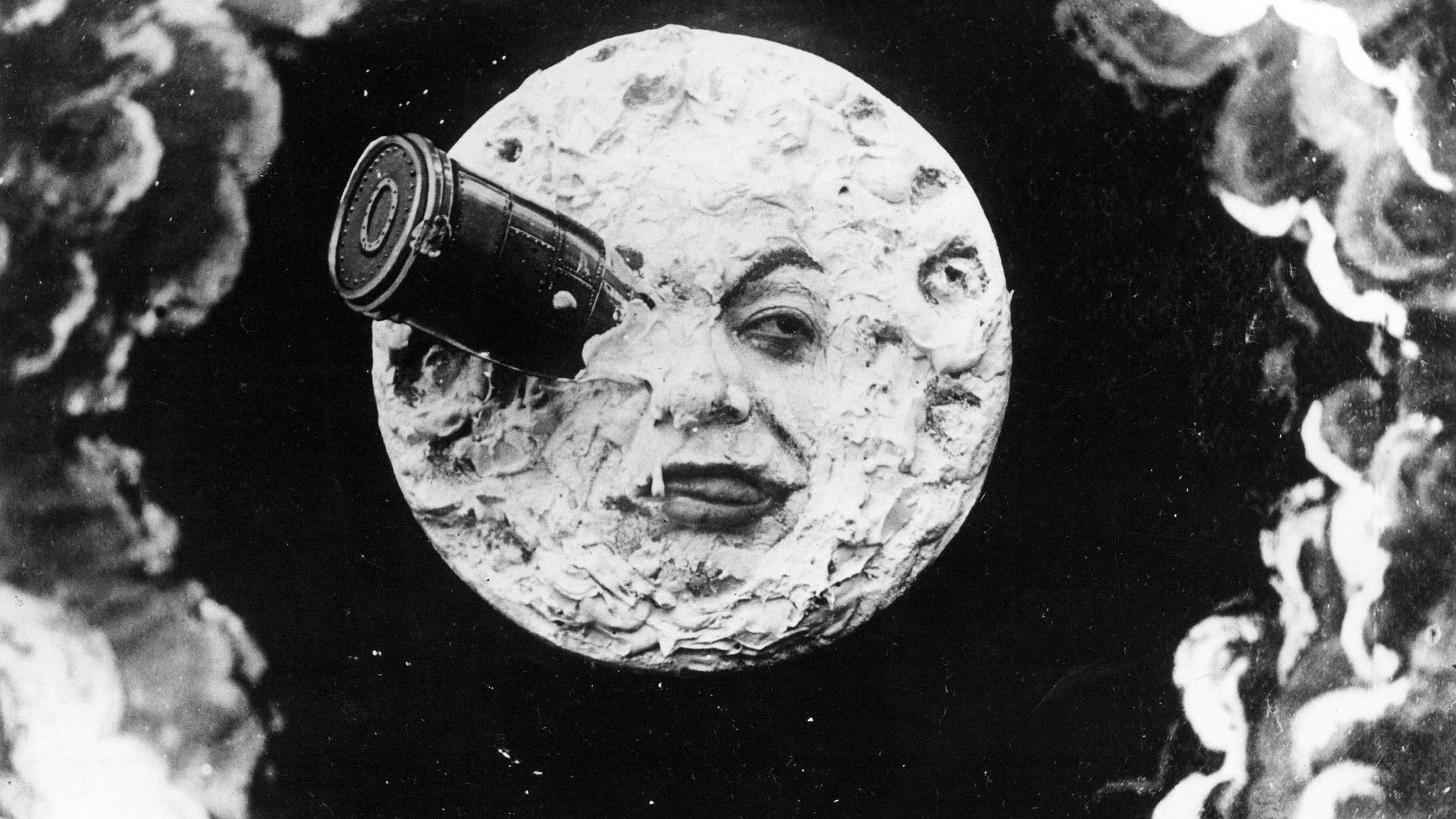
Georges Méliès, still image from the film Le Voyage dans la Lune, 1902
Jonathan Bell has written for Wallpaper* magazine since 1999, covering everything from architecture and transport design to books, tech and graphic design. He is now the magazine’s Transport and Technology Editor. Jonathan has written and edited 15 books, including Concept Car Design, 21st Century House, and The New Modern House. He is also the host of Wallpaper’s first podcast.
-
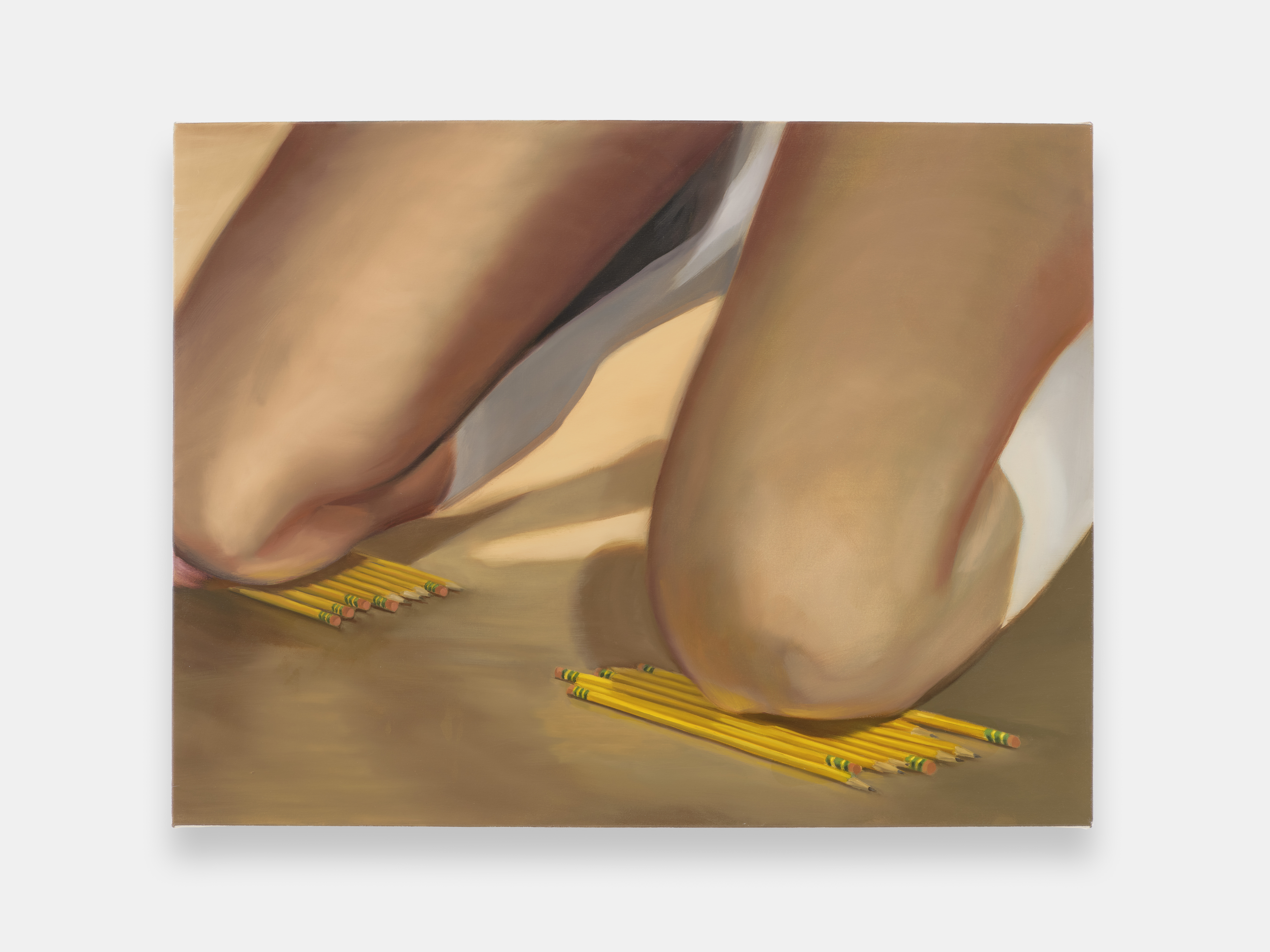 ‘I want to bring anxiety to the surface': Shannon Cartier Lucy on her unsettling works
‘I want to bring anxiety to the surface': Shannon Cartier Lucy on her unsettling worksIn an exhibition at Soft Opening, London, Shannon Cartier Lucy revisits childhood memories
-
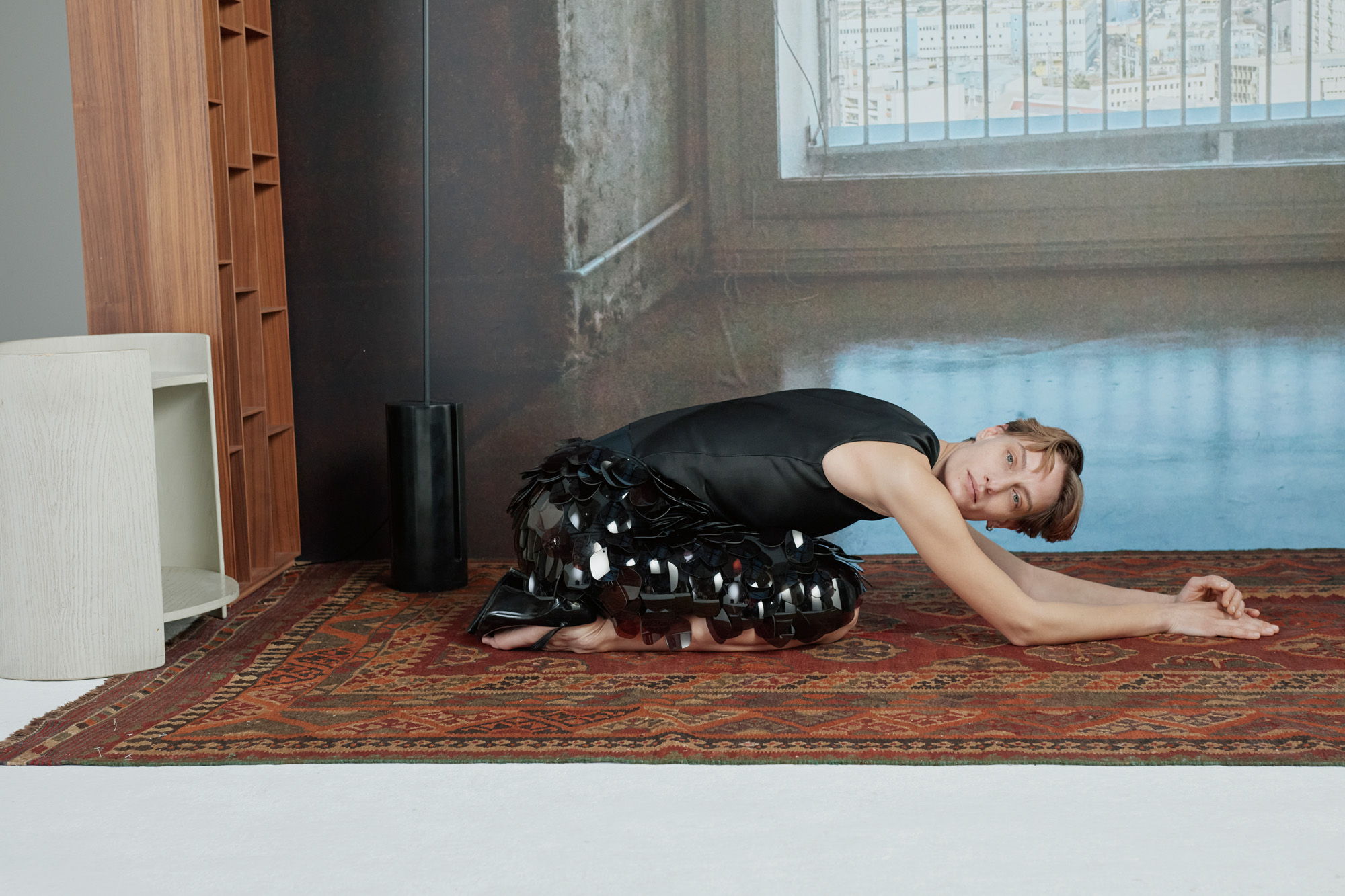 What one writer learnt in 2025 through exploring the ‘intimate, familiar’ wardrobes of ten friends
What one writer learnt in 2025 through exploring the ‘intimate, familiar’ wardrobes of ten friendsInspired by artist Sophie Calle, Colleen Kelsey’s ‘Wearing It Out’ sees the writer ask ten friends to tell the stories behind their most precious garments – from a wedding dress ordered on a whim to a pair of Prada Mary Janes
-
 Year in review: 2025’s top ten cars chosen by transport editor Jonathan Bell
Year in review: 2025’s top ten cars chosen by transport editor Jonathan BellWhat were our chosen conveyances in 2025? These ten cars impressed, either through their look and feel, style, sophistication or all-round practicality
-
 ‘Nike: Form Follows Motion’ surveys 50 years of the Swoosh’s era-defining design
‘Nike: Form Follows Motion’ surveys 50 years of the Swoosh’s era-defining design‘Nike: Form Follows Motion’ at the Vitra Design Museum in Germany, curated by Glenn Adamson, is the first-ever museum exhibition dedicated to the sportswear giant
-
 What will the future of energy look like? Vitra Design Museum seeks the answer
What will the future of energy look like? Vitra Design Museum seeks the answer‘Transform! Designing the Future of Energy’ at Vitra Design Museum explores the future of energy, from solar-powered devices to smart architecture (until 1 September 2024)
-
 Why are gardens good for us? Vitra Design Museum’s ‘Garden Futures’ explores the potential of green spaces
Why are gardens good for us? Vitra Design Museum’s ‘Garden Futures’ explores the potential of green spaces‘Garden Futures: Designing with Nature’ is on view at Vitra Design Museum until 3 October 2023, with an exhibition design by Formafantasma
-
 Piet Oudolf’s Vitra garden opens in Weil am Rhein
Piet Oudolf’s Vitra garden opens in Weil am RheinPiet Oudolf creates a garden for all seasons at the Vitra campus in Weil am Rhein, Germany: we took a sneak first peek of the garden design project, now open to the public